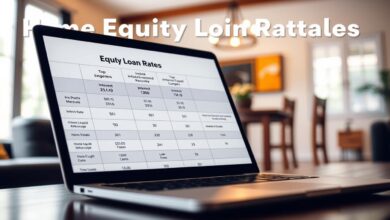Loan Companies: Find the Best Personal Loans
Choosing the right financial partner can shape your path to success, whether you’re consolidating debt, planning a home renovation, or handling emergencies. With options ranging from traditional banks to digital platforms, today’s lending market caters to diverse needs and credit backgrounds. Understanding how these providers work helps you secure terms that fit your goals.
Established names like LendingClub have transformed borrowing, connecting over 5 million members with $90 billion in funding since 2007. Others, such as Discover, offer APRs starting at 7.99% with no hidden fees. Peer-to-peer pioneer Prosper combines flexibility with trust, maintaining an A+ BBB rating after funding $28 billion in loans.
What sets top lenders apart? Competitive rates, transparent costs, and repayment plans tailored to your budget. This guide simplifies your search by comparing features, explaining industry terms, and highlighting strategies to avoid common mistakes. You’ll learn how to leverage your credit history and income to access better deals.
Key Takeaways
- Leading lenders prioritize low rates, zero fees, and adaptable repayment schedules
- Digital platforms often provide faster approvals than traditional institutions
- Your credit score directly impacts the terms and amounts available
- Comparing multiple offers ensures you find the most cost-effective solution
- Transparent lenders disclose all costs upfront, avoiding surprise charges
Understanding Personal Loans
In today’s fast-paced world, quick access to funds can make all the difference. Whether covering surprise bills or funding dream projects, these financial tools help bridge gaps without draining savings.
What Makes Them Unique
Personal loans give you cash upfront without requiring collateral like your car or home. Approval depends on your credit history, income, and existing debts. You repay the amount through fixed monthly installments over 2-7 years.
Popular uses include:
- Paying off high-interest credit cards
- Renovating kitchens or bathrooms
- Covering emergency medical costs
- Financing weddings or vacations
Why Choose Over Credit Cards?
Unlike revolving credit card balances, personal loans offer predictable payments and clear payoff dates. Most have lower interest rates than plastic – especially if your credit score is 670 or higher. This structure helps avoid endless debt cycles.
Key advantages:
- Fixed rates that won’t spike unexpectedly
- Single monthly payment simplifies budgeting
- Faster debt elimination timeline
With responsible use, these loans can improve financial health while funding what matters most.
Exploring Top Loan Companies
Modern financial solutions blend technology with customer-focused policies to create standout experiences. What separates industry leaders from average providers? Let’s examine the traits that redefine excellence in lending.
Innovation Meets Borrower Needs
Digital-first platforms like LendingClub demonstrate how eliminating physical branches reduces operational costs. This efficiency translates to better rates – up to $50,000 available at fixed terms – while maintaining robust customer support through virtual channels.
Discover reshapes expectations by removing all fees from their products. From application to final payment, borrowers enjoy transparent pricing without origination charges or prepayment penalties. Their flexible 3-7 year repayment windows adapt to various budgets.
Prosper combines financial innovation with regulatory leadership through its American Fintech Council involvement. Beyond personal lending, they offer tools that help customers build credit health while accessing funds quickly. Most applicants receive same-day decisions, with funds arriving next business day.
Three pillars define top-tier providers:
- Rate structures that reward strong credit profiles
- Loan amounts matching diverse financial needs
- Educational resources for informed borrowing
These features create stress-free experiences from application to payoff. By prioritizing customer empowerment over traditional bank practices, modern lenders deliver solutions that align with real-world financial goals.
Loan Terms and Rates Explored
Navigating financial agreements requires understanding the fine print that shapes your repayment journey. Let’s break down how rate structures and repayment schedules impact your budget.
Fixed vs. Variable Interest Rates
Fixed rates stay constant, making budgeting predictable. Discover’s 7.99%-24.99% APR range uses this model. Variable rates change with market indexes, which could mean lower initial costs but uncertainty later.
| Feature | Fixed Rate | Variable Rate |
|---|---|---|
| Payment predictability | Never changes | May fluctuate |
| Market impact | None | Direct correlation |
| Best for | Long-term planning | Short-term needs |
Decoding APR, Fees, and Payment Plans
The APR combines interest and fees to show true borrowing costs. LendingClub’s fixed-rate options include this transparency. Prosper’s calculator helps visualize how different terms affect monthly payments.
Key considerations:
- 24-84 month repayment windows
- Origination fees reducing initial funds
- Auto-pay discounts saving 0.25%-0.5%
Shorter terms mean higher monthly payments but less total interest. Bi-weekly schedules can accelerate payoff without straining your budget.
Eligibility and Application Process
Understanding lender requirements helps you prepare for success before hitting “submit.” While criteria vary, most providers focus on three key factors: income stability, credit history, and identity verification.
Minimum Income and Credit Score Requirements
Income thresholds typically start around $25,000 annually, though some lenders accept lower amounts with strong credit profiles. Discover sets this exact figure as their baseline, while others may require up to $35,000. Your employment history and debt-to-income ratio also influence eligibility.
Credit expectations differ widely:
- 580+ scores qualify for basic options
- 660+ unlocks better rates and terms
- 720+ receives premium offers
LendingClub’s soft credit check lets you preview rates without score impacts. This feature helps compare options while protecting your credit health.
Step-by-Step Application Guide
Start by gathering essential documents:
- Recent pay stubs or tax returns
- Government-issued ID
- Proof of address
Most online applications follow this path:
- Complete pre-qualification form (5-10 minutes)
- Review personalized offers
- Submit formal application with documents
- Receive approval decision within hours
Digital platforms often fund accounts within 24 hours after approval. Traditional institutions might take 3-5 business days. Always double-check your information for accuracy to avoid delays.
The Impact of Credit Scores on Loan Approval
Your financial fingerprint opens doors to better borrowing opportunities. Lenders use your credit score – a three-digit number between 300-850 – as their primary trust meter. Scores above 700 unlock premium rates, while those below 580 may limit options.
Here’s how it works:
- 740+ scores typically secure the lowest APRs
- 680-739 range qualifies for competitive offers
- Below 620 often requires specialized solutions
Modern lenders like LendingClub simplify rate checks through soft inquiries that don’t impact credit standings. Only formal applications trigger hard pulls, which might temporarily lower your score by 2-5 points. This transparency lets you compare offers risk-free.
Your payment history tells a story lenders want to hear. They analyze:
- Consistent bill payments
- Credit card balances below 30% limits
- Mix of account types
Smart borrowing can actually boost your credit profile over time. Regular on-time payments demonstrate reliability, while reducing overall debt improves utilization ratios. Just avoid taking new debts immediately after approval.
If your current score needs work, consider these steps before applying:
- Dispute credit report errors
- Pay down existing balances
- Set up payment reminders
Remember – every financial decision impacts credit health. Strategic planning helps turn temporary numbers into lasting financial strength.
Debt Consolidation and Financial Health
Regaining control of your finances often starts with simplifying complex debt situations. Combining multiple balances into one manageable plan can transform overwhelming payments into achievable milestones. This strategy not only streamlines your budget but often reduces overall interest costs.
How Consolidating Debt Can Improve Your Finances
Debt consolidation merges credit card balances and other high-interest obligations into a single fixed-rate payment. Many borrowers save thousands by escaping 18-29% APR credit card rates. “Members who consolidate typically reduce their interest costs by 35%,” notes a LendingClub representative.
Beyond saving money, this approach eliminates the stress of tracking multiple due dates. You’ll see exactly when you’ll become debt-free – no more guessing games. Automatic payments help build consistent financial habits while protecting your credit score.
Long-Term Benefits of Managing Debt
Successful consolidation creates ripple effects across your financial life. Paying off credit cards lowers your credit utilization ratio, which accounts for 30% of your FICO® Score. Keeping accounts open (but unused) maintains available credit without temptation.
Over time, you’ll free up money for emergencies or investments. Imagine redirecting former debt payments into retirement accounts or home upgrades. This strategic shift demonstrates responsibility to future lenders, improving access to mortgages or auto financing.
“Consolidation isn’t just about numbers – it’s about creating space for financial growth.”
Remember: consolidation works best when paired with spending discipline. Create a realistic budget and stick to it. Your future self will thank you when unexpected opportunities arise.
Comparing Banking Options: Online vs. Traditional
Modern borrowers face a critical decision: embrace digital efficiency or stick with familiar branch services. Each option delivers distinct benefits tailored to different financial styles and needs.
Speed Meets Savings in Digital Banking
LendingClub exemplifies digital innovation, earning GOBankingRates’ 2024 Best Online Bank title. Without physical branches, they pass savings to customers through lower rates and same-day decisions. Round-the-clock account access via mobile apps lets users track applications or make payments from home.
Specialized platforms often provide tools like payment calculators and rate comparisons. These resources help borrowers visualize how different terms affect their budgets. Faster funding – often within 24 hours – makes digital choices ideal for urgent needs.
The Human Touch of Traditional Institutions
Local branches remain valuable for those preferring face-to-face guidance. Bankers can review your entire financial picture, suggesting solutions that complement mortgages or business accounts. Some institutions offer loyalty discounts when bundling services like checking accounts and credit cards.
In-person support proves crucial for complex situations requiring personalized advice. Established relationships might also help negotiate better terms if your credit needs improvement. However, these benefits often come with slightly higher rates due to operational costs.
Your ideal choice hinges on what you value most: tech-driven convenience or hands-on service. Digital platforms excel in speed and savings, while traditional banks build trust through personal connections. Evaluate both paths to find your perfect financial fit.









